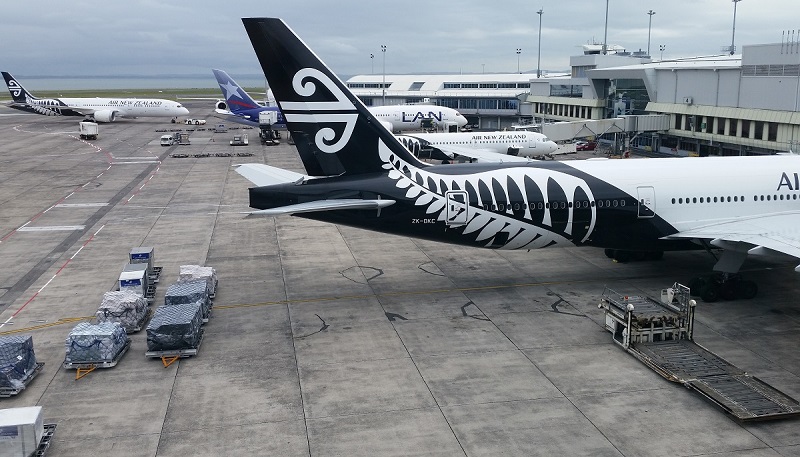Auckland International Airport is planning to merge domestic operations into the eastern end of the international terminal as part of an $NZ1 billion-plus post-COVID restructure.
Site preparation on the integrated domestic -international development is due to get underway early next year as the airport matches infrastructure to an expected international aviation recovery.
Airport management says the new domestic operation will be about three times the size of the current domestic terminal when shared check-in facilities are included.
READ: Qantas’ giant vaccination carrot: a year’s unlimited flying.
It will include “light-filled dwell spaces with views across the airfield to the Manukau Harbour” as well as expanded security screening.
A new transport hub is also planned for outside the existing international terminal, providing a new covered pick-up/drop-off area, valet services, and covered car parks connected to the terminal by an enclosed pedestrian bridge
Design for a new domestic hub at Auckland was already underway before the pandemic hit and was one of the major infrastructure projects canceled or deferred by COVID.
The first stage for early 2022, costing about $NZ30 million, will include demolishing and relocating the existing eastern baggage hall, livestock area and waste disposal facilities as well as relocating key utilities and operations centers.
Airport chief executive Adrian Littlewood said the combined facility would provide a seamless journey between major New Zealand destinations and international air connections as well as upgraded transport facilities for Auckland-based travelers.
“We previously had around 30,000 people arriving and departing at the international terminal every day,’’ he said.“That’s fallen by around 97 percent to just a thousand or so a day currently.
“We’re taking advantage of the downturn where we can, demolishing and relocating operations and services to clear the domestic hub site, while bringing forward upgrades of core utilities critical to the functioning of the airport while passenger numbers are low.
“The low-traffic environment has also allowed us to re-look at and refine the original design and construction phasing to arrive at what we think will be an even better end result.”
Beyond the demolition and enabling works, Littlewood said the next major phase of the domestic hub’s development would be determined by a range of factors including the speed of aviation’s recovery.
“While our aeronautical development will be matched to the recovery of air travel, we are encouraged by the ramp-up in New Zealand’s COVID-19 vaccination program,’’ he said.
“It means that we can begin to look through the current situation and start to anticipate the recovery in air travel, and that is important for big infrastructure programs, which are costly and take time to deliver.”
Projects set to remain on hold for now include a second runway, a new international arrivals area, a new cargo precinct and expanded international airfield and taxiway capacity.
























